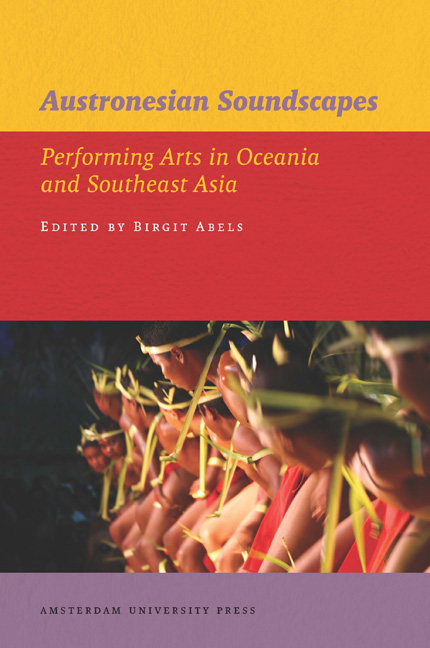7 - Fractals in Melanesian Music
Published online by Cambridge University Press: 20 January 2021
Summary
When I was preparing for my first field trip to Papua New Guinea in 1989, I read a short text by Gregory Bateson on the ceremonial flute music from the Sepik River area. Bateson (1936: 158-170) refers to the significance of this music for the freshly initiated young men, who, while learning to play the flutes, also learn – according to Bateson – about the social organisation of their group. Bateson states:
Two men play together and their flutes are tuned by trimming the length so that flute A is exactly one tone higher in pitch than flute B. Then the harmonics of A will to a great extent fill the gaps in B's scale, an arrangement, which would seem to be a characteristic product of Iatmul thought. In their social system this pattern is repeated in the Age Grades which are arranged in an alternating series, staggered like the spokes of a wheel; and again in a line series of brothers there is a similar staggering and it is expected that the first, third and fifth brothers will form an alliance in quarrels against the second and fourth. Whether the process of thought patterned by such a system have [sic] influenced the planning of the flute duet it is impossible to say for certain, but this sort of staggering is not common as a feature of social organisation and I do not know of any similar phenomenon in music (Bateson 1936).
Bateson describes the impossibility of determining whether ‘the process of thought patterned by such a system’ has influenced the music of the flute duet. The following analysis will show that there is, however, a very strong reason to believe that this is indeed the case. Furthermore, the phenomenon that a society's thought patterns are mirrored in its key music seems not to be limited to the flute music in Papua New Guinea, but is evident in other places in Melanesia as well (Ammann 1997; Coppet 1978). I have chosen the ayoii songs of New Caledonia as an example. In both cases, the music of the ceremonial flutes at the Middle Sepik and the ayoii songs of New Caledonia, the music is composed of small structural forms, which are repeated on various levels, from the smallest motif to the larger parts of the song.
- Type
- Chapter
- Information
- Austronesian SoundscapesPerforming Arts in Oceania and Southeast Asia, pp. 155 - 168Publisher: Amsterdam University PressPrint publication year: 2012
- 1
- Cited by



